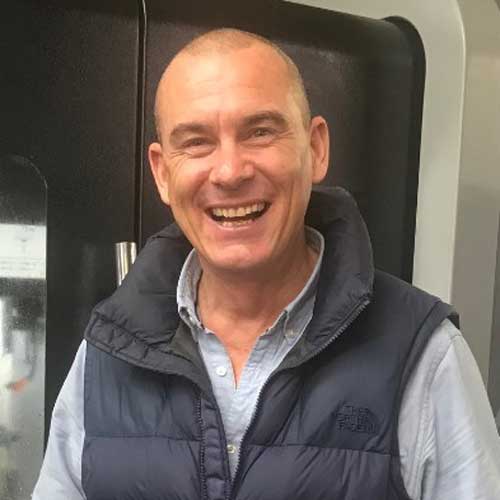When you commission a custom moulded part, you are really commissioning confidence: confidence that first articles pass, unit costs land where finance expects, and supply is reliable. This chapter-style guide distils hard-won lessons from production floors and design reviews into a practical playbook for getting custom injection moulding in the UK right first time.
What “right first time” really means
Right first time is not luck. It is the outcome of a disciplined process where design intent, manufacturing reality, and quality planning are aligned from day one. In practice, it means:
- First-article acceptance with only minor, pre-planned adjustments
- Capable processes (repeatable, measurable, and documented)
- Stable unit economics across ramp-up and steady state
- A supplier who is accountable for outcomes, not just outputs
Attwood PD positions itself as your one-stop prototyping and production partner across plastics and metals, from rapid prototypes through to low, medium, and high-volume production. That single point of accountability is the bedrock of right-first-time outcomes.
The UK right-first-time framework (7 stages)
Use this as your blueprint from brief to SOP.
1) Discovery and intent
Clarify end-use, environments, lifetime volumes, and target cost. Decide early if the programme must meet automotive, medical, rail or aerospace expectations; this shapes resin choice, documentation level, and validation effort.
Checklist: stakeholders, functional requirements, certification needs, cosmetic expectations, supply risk, sustainability goals.
2) Design for moulding (DFM essentials)
Aim for smooth flow and predictable shrink, not just geometric correctness.
- Draft: 1–2° on textured faces; more for deep cores
- Walls: keep uniform (2–4 mm typical for commodity resins); step down with ribs rather than thick sections
- Ribs & bosses: ~0.5–0.6× nominal wall; fillet internal corners to reduce stress
- Knit lines: move them away from critical features with gate strategy
- Datum strategy: design inspection features into the part, not as an afterthought
3) Material and resin strategy
Pick the resin for function first, aesthetics second, processing third. A quick selector:
| Resin | Strength/Heat | Chemical/UV | Cosmetic | Typical notes |
|---|---|---|---|---|
| ABS | Good/Moderate | Fair/Fair | Excellent paintability | General purpose, housings |
| PC | Very good/Good | Fair/Fair | High clarity (grades) | Impact-critical, lenses, snap-fits |
| PA 6/6 (nylon) | Good/Good | Good/Fair | Moderate | Absorbs moisture; GF grades for stiffness |
| PP | Moderate/Moderate | Good/Good | Good | Living hinges, chemical exposure |
| POM (acetal) | Good/Good | Good/Fair | Good | Low friction, precision gears |
| TPE | Variable/Low | Good/Fair | Soft-touch | Overmoulded grips and seals |
| PEEK (advanced) | Excellent/Excellent | Excellent/Good | Fair | High temp, aggressive chemicals |
Tip: lock down colour standards, surface texture numbers, and any additive packages (flame retardant, UV, anti-static) before tool kick-off.
4) Tolerance and shrinkage plan
Custom injection moulding lives or dies on a shared tolerance model.
- Define critical-to-function dimensions and datums early
- Use realistic general tolerances on non-critical features
- Plan for shrink variability by resin and geometry; avoid stacking tight limits
- For assemblies, design compensators: slots, float, or post-mould ops where sensible
5) Tooling route selection
Your tooling decision fixes 70–80% of outcome quality and cost. Choose deliberately.
| Tooling route | Typical lead time | Up-front cost | Part cost | Best for | Notes |
|---|---|---|---|---|---|
| Aluminium prototype / bridge | Short | £ | ££ | EVT/DVT, 100s–10,000s | Fast to iterate; good cosmetics with care |
| Steel (P20) production | Medium | £££ | ££ | 10,000s–100,000s | Robust, stable dimensions |
| Steel (H13 or similar) hard tool | Longer | ££££ | £ | 100,000s+ | High wear, glass-filled resins |
| Family tool | Medium | £££ | £ | Multi-part sets | Balancing fill and cosmetics is key |
| Multi-cavity | Medium–Long | £££–££££ | £ | High volumes | Consider hot runner and cavity balance |
| MUD/frame insert | Short | ££ | ££ | Agile programmes | Great for fast changeovers and cost control |
6) Gating, cooling, ejection and cosmetics
Agree the runner system (hot vs cold), gate type and location, cooling channels, and ejector strategy up front. This is where you prevent blush, sink, warp, jetting, and visible gate vestige. Specify critical A-surface areas and texture call-outs on the 2D.
7) Validation and ramp plan
Structure your build: T0 for learning, T1 for dimensional tune, T2 for cosmetics and capability. Align on documentation (FAI, material certs, traceability), and set acceptance criteria for capability on critical dimensions before parts ship.
Cost levers you control (without hurting quality)
- Geometry discipline: uniform walls, ribs not mass, generous radii
- Cavity strategy: family tools for matched sets; multi-cavity when demand is proven
- Runner system: hot runners reduce waste at scale, cold runners can be faster to tool
- Inserts and overmoulds: standardise metal inserts; avoid bespoke unless needed
- Texture and finish: deep textures drive draft and polish time; agree cut-line positions
- Colour management: masterbatch vs compounded colour; avoid last-minute changes
- Inspection scope: match sampling plans to risk; don’t overspecify CMM on non-criticals
- Packaging & logistics: nestable parts, sensible pack counts, moisture control where required
Insert moulding vs overmoulding (and when to choose either)
- Insert moulding: place a metal or plastic insert into the cavity and mould around it. Best for threads, wear surfaces, and structural bosses. Design anti-rotation features on the insert.
- Overmoulding (2-shot or 1K+1K): add a soft-touch or secondary polymer over a substrate. Check chemical compatibility and recommended Shore A ranges; design mechanical interlocks (undercuts, holes) not just adhesion.
Supplier due diligence: the 12 questions that matter in the UK
- Can you share a DFM example pack for a similar part? What changed and why?
- What are my tool ownership terms and storage/maintenance plans?
- Which tool steels and coating options are you proposing for my resin?
- How will you manage colour and texture approvals (chips, plaques, drawdowns)?
- What is the sample build plan (T0/T1/T2), and what will I receive at each gate?
- Which measurement reports do you provide as standard? How are CTQs handled?
- Do you offer mouldflow or will you run empirical DOE to dial in settings?
- What are your contingency and spare parts plans for the tool?
- What traceability and lot control do you maintain on resin and colourants?
- How do you maintain tools between runs and over life-of-programme?
- Can you support secondary ops (printing, plating, assembly, testing)?
- What are realistic lead times now, and what risks could extend them?
Why Attwood PD? Beyond rapid DFM and mould build, we offer plastics and metals under one roof of accountability: rapid prototypes, bridge tooling, and full series production, plus downstream finishing and assembly. You get a manufacturing partner who can flex with your programme as it scales.
Competitive context: UK buyers will see strong instant-quote platforms and international groups (e.g., Protolabs, Xometry, ARRK, Geomiq) with extensive resources; Attwood PD distinguishes itself with engineering-led, bespoke project guidance and end-to-end production support.
A realistic UK project timeline (illustrative)
- Week 0–1: DFM review and design refinements agreed
- Week 2–4: Tool manufacture, texture plates approved
- Week 5: T0 samples for learning and gate movement decisions
- Week 6–7: T1/T2 samples, capability on CTQs, cosmetic sign-off
- Week 8: SOP, controlled ramp, PPAP-style or equivalent dossier available if required
Timings vary with complexity, resin, and surface expectations; align early and revisit at each gate.
Practical FAQs
What drives unit price the most? Part weight, cycle time (cooling rules), cavity count, and scrap. Geometry discipline and the right runner system are your biggest levers.
Prototype aluminium or steel production tool? Aluminium gets you learning and parts fast; steel gives life and stability. Many UK programmes start in aluminium, then lock to P20 for series.
How tight can I hold tolerances? Plastics move: reserve tight limits for CTQs, and design in compliance features. Agree capability targets before cutting steel.
When should I use a family tool? When a set of parts always ships together and shares cycle time. Balance fill and cosmetics carefully to avoid compromise.
How UK buyers search (and how this guide helps)
Projects commonly begin with searches like custom injection moulding UK, insert moulding UK, and overmoulding services UK. This guide maps those intents to concrete decisions on resin, tooling, validation, and supplier choice.
Next steps with Attwood PD
- Send your STEP/IGES and a marked-up 2D for a fast, engineering-led DFM review
- We will propose the right tooling route (bridge, MUD, family, multi-cavity) with clear costs and timelines
- You will receive a sample plan, measurement approach, and a life-of-programme support model that scales from prototypes to high-volume production
Ready to get your custom injection moulding right first time in the UK? Speak to Attwood PD today for a no-nonsense plan that puts quality, cost, and lead time on your side.


